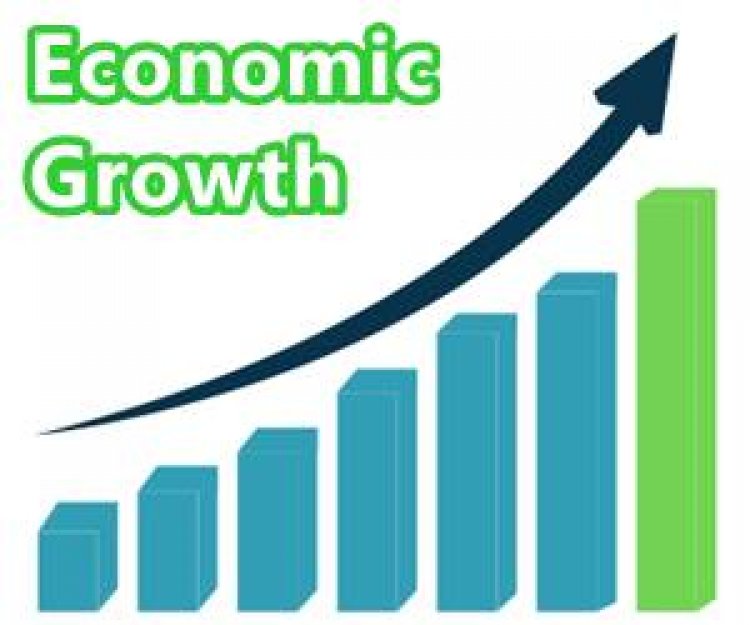2023: Factors on With Economic Growth will depend on Critical Factors
STORIES, ANALYSES, EXPERT VIEWS

The year 2023 will bring challenges and opportunities for India’s economy. There are scores of factors on which growth and development will depend. The Economic Times has identified many. We pick up the following essential areas / sectors.
Renewable energy
Solar and wind energy will gather pace in 2023 as local supplies improve, helping India cut emissions. India will have to aim for at least 20-25 GW of renewable energy in 2023, and in the years ahead, to achieve the 500 GW target by 2030. The huge potential is driving interest in the sector with over Rs 2 lakh crore ($25 billion) investment expected in the EV ecosystem, manufacturing of solar equipment, energy storage tech, and production of green hydrogen. Though wind equipment is produced locally, solar is heavily import-dependent — up to 90%. The good news is that over `8,700 crore of domestic capacity is expected soon. Big corporate investments with global-scale economics look to be taking off.
Startup ecosystem challenging
Venture funding has slowed significantly for growth-oriented startups, with 2022 already a weak year. According to Venture Intelligence, startups saw nearly $24 billion in funding in 2022 as of December 28, down from a peak of $35.46 billion last year. With over 100 unicorns in India, startups are emerging as one of the largest job generators as well as wealth creators. But new startup launches have slowed in 2022. Easing liquidity and financing conditions will be needed for more startups to be birthed in the country, leading to potential disruptions in large industries
Telecommunications and 5G change
The 5G networks are set to disrupt processes, businesses and social interactions while creating opportunities. The networks will loop in smartphones, cars, homes, machines, robots and household gadgets, lighting up a true Internet of Things (IoT) ecosystem. A host of enterprise apps across industry verticals will emerge to ride this disruption, creating startups, wizards and billionaires. Ericsson sees 5G business services as a $17 billion revenue opportunity by 2030 for telcos in India.
EV revolution
Over 100,000 EVs are expected to be sold next year, double the 50,000 in 2022. The charging infra is catching up. Essentially, three-wheeler and two wheeler are the main segments expected to drive sales.
Data and privacy
The proposed Digital India Bill gives citizens hope that their non-personal data would be safe while the Digital Personal Data Protection Bill in 2023 would protect their personal privacy. The twin bills will change the way the internet is governed. Tech-savvy Indians will be regulated with legislation much more in tune with global standards. Social media platforms, ecommerce sites and fact-checking portals are likely to be classified into different categories, with specific regulations for each. With emerging arenas such as blockchain and metaverse under the purview of the proposed law, entities operating in these spaces will get legal backing.
Artificial intelligence tools
Experts say AI will soon go beyond customer support to facilitating end-to-end transactions — be it bill payments, submitting documentation for a loan, or even booking a flight. Industry leaders believe there are massive possibilities for AI to provide ‘India first’ solutions in sectors like agriculture, education, and health. For farmers, it could predict soil quality or weather, while predictive healthcare applications could warn of risks of certain diseases. In education, AI could take the load of teaching fundamental concepts, allowing teachers to focus on complex concepts. However, India Inc needs to catch up with policymakers. Policymakers will need to use huge datasets to the country’s advantage, while companies will have to invest more in 2023 to harness AI’s potential.
Job market
India Inc’s hiring plans seem robust and the job market is off to a sound start in 2023, according to the Teamlease Employment outlook report for January-March 2023. Hiring experts predict moderate hiring in IT. Sectors such as hospitality and tourism, FMCG, healthcare, auto (especially EVs), and infra are likely to drive hiring in the next few quarters.
Make-in-India semiconductor
Thirteen months after a 76,000-crore incentive splash, the Centre may finally roll out approvals for at least two applicants this month to make semiconductors, display fabs, assembly and test facilities. Three investors have together promised over $26 billion to set up three semiconductor factories. Geopolitical developments have imparted greater urgency with countries looking to cut dependence on China for anything critical to national security.
Labour reform
In a significant reform, 29 labour laws, some as old as half a century, have been amalgamated into four codes. But these reforms have not been rolled out as the follow-up rules are yet to be finalised. Since labour is a concurrent subject, both the Centre and states must be on board. There is fear of a trade unions’ backlash ahead of elections.
Role of private capital expenditure
High growth has not unleashed private investment, as capacity utilisation has remained low, even as the insolvency law has freed up locked-up factories. Things may be finally turning. Capacity utilisation has crossed trend levels in a number of industries. Credit off-take has been on the up. Both corporate and banking balance sheets are stronger than ever and India Inc is bullish on new opportunities as global supply chains readjust to geopolitics.
Agriculture
Smart farming with soil testing-based decisions and automation using AI focused on precise application inputs in agriculture is here. Sensors and drones will be used for precision, quality and environmentally cost-effective farming. Traditional farmers will not be left behind as technology pervades farming. Dependence on chemicals and fertilisers will drop as technology facilitates more efficient application and data permits more scientific usage based on soil type, including the use of organic products. And, like elsewhere, drones will change the whole process of cultivation and harvesting. Industry estimates suggest that the use of drones could increase crop yields by 15-20%. The government has already flagged off 100 Kisan Drones in different cities to spray pesticides on farms across the country.
Free trade agreements
The government is expected to engage in intense negotiations with the UK, Canada, the EU and the Gulf Cooperation Council in 2023 to ink bilateral free trade agreements (FTAs). These pacts aim to raise the share of its exports in global trade to 3% by 2027 and 10% by 2047 from the current 2.1%. But slowing global trade, slowdown, new geopolitical imperatives following the Russia-Ukraine conflict and non-tariff barriers amid rising protectionism could prove to be hurdles.
(ET)
















